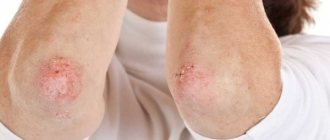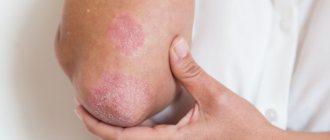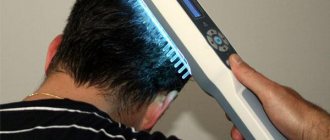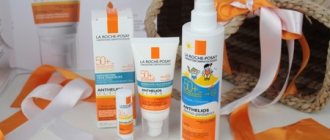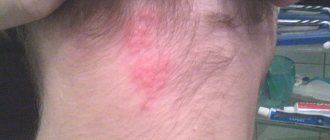What is peeling skin on the palms
Hands are one of those parts of the body that are more susceptible to negative external factors than others. It is natural for the skin to renew on them within a month, when the upper layer of the epidermis is replaced almost imperceptibly. If this becomes obvious, then there is definitely a problem in the body. You should be alert to the skin on your hands bursting, flaking and hanging down in the form of rags that can even be torn off. This is peeling, which affects the fingers and hand as a whole, and often even both.
Symptoms
Skin peeling is manifested by several simple signs - it bursts or cracks, after which pieces of the epidermis appear on the surface, which peel off on their own or can be torn off. Such symptoms affect the fingers as a whole, the surface between them and their pads, the palm itself and its back side. The skin may peel off on a certain part of the hand or all at once. A reason to consult a specialist are other signs that may be present along with peeling:
- peeling;
- burning and itching;
- redness;
- rash;
- pain.
A 4 year old child has peeling palms. Causes of peeling hands
The skin on the palms of many people peels, and for some it becomes a common occurrence. But each process has its own reason, which a detailed analysis of all circumstances and signs will help to clarify.
What causes rough fingers in an adult?
The skin becomes rough for various reasons. And although men have a rougher epidermis due to physiological characteristics, dryness, flaking and hyperkeratosis are not considered normal. They are caused by other changes, the list of which may include not only local disturbances, but also systemic disturbances:
- Vascular disorders (endarteritis, atherosclerosis).
- Kidney and liver failure.
- Hematological disorders (chronic anemia).
- Endocrine diseases (hypothyroidism, diabetes mellitus).
- Pathology of the nervous system (polyneuropathy, damage to the brain and spinal cord).
- Intoxication and poisoning with chemicals and medications.
In these cases, peeling and dryness can be considered a manifestation of trophic disorders associated with a lack of blood flow or neurogenic supply, or the action of toxic substances. Given the likelihood of quite serious conditions, careful differential diagnosis is required.
Cracking due to external factors
When peeling and cracks are found on the skin of one hand (usually the dominant one), you can think about the consequences of exposure to external factors. In men, roughening of the palms is observed during intensive and constant manual labor. There are other factors that contribute to the appearance of peeling:
- Aggressive detergents.
- Inappropriate skin care products.
- Chapping, exposure to cold.
- Excessive insolation.
This is how an allergic reaction may occur in response to contact with various biological irritants (plants, animal fur, sea life). Ionizing radiation has a negative effect on the epithelium, including during radiation therapy of tumors. Rough skin on the feet is formed by wearing uncomfortable shoes and excessive sweating.
When analyzing the origin of peeling on the hands, one should first of all exclude the negative influence of external irritants.
Itches with neurodermatitis
A wide group of causes are associated with dermatological pathology. Atopic dermatitis (neurodermatitis) often appears on the hands, an important symptom of which is intense itching. Pinkish-brown nodules first appear on the skin, which then merge into foci of infiltration, accompanied by dryness, peeling and emphasized patterns (lichenification).
Due to intense itching, scratching occurs, which only worsens the damage to the epithelium. Patients experience autonomic reactions in the form of persistent dermographism and a pronounced pilomotor reflex. Neurotic disorders occur - irritability, decreased mood, sleep disturbance.
Foot bursting due to fungus
Cracks in the interdigital spaces are a common consequence of mycotic lesions. A fungal infection of the skin of the feet is also accompanied by weeping, itching, and the appearance of painful erosions. From the interdigital folds it spreads to the dorsum of the foot and can cover the nail plates. Maceration of the epidermis promotes the penetration of secondary flora (usually streptococcal) with the development of pyoderma and erysipelas.
Why does it peel off on a child?
A child's skin is much more delicate than that of an adult, and therefore it suffers more from the negative influence of external factors. But taking into account the characteristics of childhood, there are some nuances in the development of such a problem.
Dry with vitamin deficiency
The nature of nutrition plays a great importance for children. The skin reacts quite quickly to a lack of fluid and essential nutrients, especially vitamins A and E. A similar problem can occur with insufficient or unbalanced nutrition or fasting. In addition, important elements may be poorly absorbed due to intestinal pathology with malabsorption syndrome, helminthic infestations, dehydration is observed against the background of infectious diseases with severe diarrhea and vomiting.
Slipping on palms after scarlet fever
Scarlet fever is considered one of the common causes of large-plate peeling on the palms of children. This symptom is observed during the recovery period, when the pinpoint rash on the body disappears, the temperature normalizes, and the symptoms of streptococcal sore throat go away. The skin peels off on the palms and feet, and fine-plate peeling may be observed on other parts of the body - neck, torso, ears.
Peeling in a child may have a different origin than that in adults, which requires careful attention from parents and pediatricians.
Why does the skin on the palms of the hands peel?
There are many reasons why palms and fingers peel and peel. It all depends on the individual, his skin and occupation. One of the main ones is an allergy to:
- cold;
- caring cosmetics – creams, ointments, soaps, etc.;
- food consumed;
- medicines;
- dishwashing detergent, especially if used frequently without gloves.
Another reason that the skin peels is the lack of proper hand care, including insufficiently deep moisturizing. This is especially true for those who have naturally dry skin. From a lack of vitamins, peeling of the epidermis is also often observed. With a deficiency of microelements, the elasticity of the skin decreases, which can cause cracks. Vitamin deficiency occurs in autumn or spring. In winter, peeling is a consequence of exposure to cold. Among the more general factors that cause peeling are:
- prolonged exposure to the sun;
- dry air during the heating season or hot period of the year;
- the habit of constantly scratching your palms, which causes infection in the tissues;
- contacts with cement, dust, earth and other construction work.
A separate reason for peeling skin is a fungus. In this case, the manifestation of symptoms along the edges of the palms is especially characteristic. If the skin on the palms and other parts of the hands peels off, this may indicate some other diseases, such as:
- eczema;
- dermatitis;
- psoriasis;
- lichen planus;
- scabies (the skin peels off on the palms and between the fingers).
In this case, not only does the skin peel off, but also itching, redness and a rash appear. Changing cosmetics will not help here. Treatment is carried out after tests and can only be prescribed by a doctor. In addition to skin pathologies, the reason that the skin peels off is also diseases of the internal organs, parasitic, infectious, etc.:
- lupus erythematosus;
- parakeratosis, hyperkeratosis;
- syphilis;
- staphylococcal infections;
- scarlet fever (fingertips peel off);
- helminthic infestation;
- dehydration (skin peels off, hair becomes dry);
- stress and neurological disorders;
- pathological processes in the pancreas;
- hormonal imbalance;
- reduced immunity.
The skin on the palm of one hand is peeling
The reasons why the skin peels off on the palm of one hand are the same as in the case of both hands. Although more often this phenomenon is observed in the event of contact with this hand of some kind of irritant. This is how an allergic reaction to detergent, cosmetics, food, sun or dry air manifests itself. Skin diseases can also be the cause of peeling palms. Often psoriasis or lichen appears on some parts of the body, and not necessarily on both arms. Lack of vitamins is also a factor in the fact that the skin begins to peel off.
The skin is bursting
A more serious problem is skin popping. It may be more painful. Among the external reasons for this phenomenon are:
- exposure to frost;
- aggressive household chemicals;
- unsuitable cosmetics;
- contact with solvents, paints and other compounds used during repairs.
There are a number of diseases that lead to the skin on the palms or arms in general bursting and peeling off:
- eczema;
- avitaminosis;
- fungal infections;
- psoriasis;
- dermatosis;
- metabolic disease;
- hormonal imbalances;
- heredity;
- taking antibiotics;
- inflammation in the body.
The skin on the child’s hands is peeling
In young children, peeling skin on the palms of the hands is often a consequence of vitamin deficiency, reduced immunity, or hormonal imbalance. For children, this condition can be very dangerous, so you should immediately consult a doctor. Preschool children have a habit of scratching their palms, which also leads to peeling palms. When peeling is combined with a rash and redness on the face, a child may be diagnosed with dermatitis.
A 6 year old child has peeling palms. Palms are peeling - what to do?
Children's bodies are fragile and susceptible to all sorts of harmful influences.
This is especially worrying for mothers. However, do not panic if your palms begin to peel.
Causes
Since the baby’s immunity has not yet developed, any aggression in the atmosphere can cause a surprise. What causes skin to peel? It is worth listing just a few possible reasons:
- Fungal infection;
- Lack of vitamins;
- The appearance of diaper rash;
- Stress;
- Allergy;
However, there is no need to panic; it is better to consult a pediatrician who will prescribe an examination. Although some mothers do not trust them, trying to independently determine the reason. This also makes sense, so it is worth exploring the causes of peeling palms in more detail. First of all, you need to find out everything about it - after all, this is also possible.
Lack of vitamins
Not all vitamins consumed are completely absorbed by the child, especially those purchased in pharmacies. Therefore, mothers should understand what vitamins the baby lacks in order to take urgent measures.
Lack of vitamins is sometimes caused by past illnesses. Parents notice that a cold can cause complications such as peeling of the palms. Restoration of the body, good nutrition, and lubricating the palms with baby cream are required.
Fungal diseases
Any child is inquisitive, he wants to check everything with his hands. Mothers are not always able to ensure that the baby does not stroke other animals in time. And there are many other opportunities to pick up a fungus, since the child is very actively learning about his surroundings.
It is worth knowing that the fungus is transmitted perfectly through touch. Parents are able to defeat all kinds of infections on their own, but the baby’s immunity is too imperfect. You should not treat yourself; it is better to entrust it to a dermatologist.
Diaper rash
Often in winter, children's hands sweat, protected by mittens. The skin instantly reacts to this, defending itself in its own way - peeling is possible. As soon as the mother notices that her hands begin to sweat, talc, drying gels and ointments should be used.
Allergy
Peeling of the palms can also occur due to allergens. Here it is necessary to detect the allergen using the method of exclusion. Try eliminating a certain product from your diet, monitoring the reaction. When peeling continues, then you need to move on to the next product. The process is lengthy, but there is no other way. After all, it is necessary to help the little one. Allergies may not arise from foods; they can also be caused by cosmetics. Carefully examine all deodorants and perfumes in the house, and you should wash your child only with baby soap or shampoo.
Stress
Even kids can experience stress. They have their own, sometimes quite strong, experiences. Any tears from a baby are already severe stress that can disrupt a fragile immune system. You can’t expose children to additional worries, they are already enough troubles. Parents find the inability to get something funny, but the baby gets very nervous about this. Instead of punishment, it is advisable to switch his attention to something else in time, without exposing him to stress.
Dysbacteriosis
After taking it, dysbacteriosis develops in any body. Antibiotics don't care what bacteria they come across. Therefore, after completing the course of treatment, it is necessary to eliminate the consequences by taking beneficial bacteria.
Worms
A child can become infected with worms anywhere. Therefore, you should not hope for the best; it is better to use preventive measures in advance.
Treatment
It would also be useful to find out about. We also recommend everything about the reasons for the appearance of pimples in infants. Folk remedies have already been tested for centuries. Great-grandmothers also visited witches and healers, who knew the properties of plants. Here are some techniques to help prevent peeling palms:
- Oatmeal must be boiled, then the child’s hands should be dipped into baths of such a decoction every day;
- After bathing, you need to lubricate your palms with peach and linseed oil (taken equally);
- Regularly and generously lubricate your baby's palms with an extract made from wheat germ.
Conclusion
The skin is a protection, so it must always remain healthy. If the protection is unreliable, it needs to be strengthened.
Diagnostics
It is difficult to identify exactly the reasons why the skin on both palms is peeling off on your own, because some tests are needed. During a visual examination, the doctor notes other symptoms, such as cracks, pain, redness or itching. He also determines the places where these signs are noted, if they are not only on the hands. The doctor looks to see if only the fingers or palms as a whole are peeling, identifies the patient’s skin type and inquires about how long the problem has been. To diagnose hidden diseases, blood and urine tests are prescribed. A skin sample helps identify an external irritant, such as a fungus.
What to do
A dermatologist can correctly diagnose the reason why the skin of your hands is peeling, so if you have such a symptom, it is better to immediately contact a dermatologist. Until this point, you can try to improve the condition or at least alleviate it. The first thing you need to do is start taking care of your skin. After washing, they need to be dried thoroughly. Twice a day, the skin should be lubricated with a nourishing cream containing chamomile, glycerin or aloe. The following will help improve your condition:
- Baths. A very effective recipe is 1 tablespoon per 1 liter of water. Leave your hands in this composition for about a quarter of an hour, after which they are blotted with a napkin and lubricated with cream.
- Masks. Honey ones are especially useful. Honey should simply be applied to the skin. After half an hour, it is washed thoroughly.
- Lotion. Rub your hands with a piece of cucumber, then lubricate them with a mixture of glycerin cream and lemon juice.
- How to drink flaxseed oil for weight loss and cleansing the body at night or on an empty stomach
- Inflammation of the mucous membrane of the tongue
- Dermatitis - symptoms and treatment: first signs, causes and types
Treatment
A certain therapy is prescribed by a doctor after diagnosing the disease. It may include medications and a number of care products, including traditional recipes. It can be especially difficult to get rid of fungal infections, but after identifying its type, this is quite possible with the correct selection of ointment. In case of an allergic reaction, completely different medications are prescribed - with antihistamine properties, and in case of vitamin deficiency - with a complex of vitamins. Even salon procedures such as paraffin therapy, hot or spa manicure can prevent peeling.
Medication
The prescription of drugs is determined by the reason why the skin is peeling. In case of fungal infection, treatment is carried out using such means as:
- Nizoral;
- Ketoconazole;
- Exoderil;
- Fluconazole;
- Lamisil;
- Diflucan.
Therapy may not be very quick and may take a long time, up to several months. If the cause is an allergen, then you need to limit contact with it. To enhance the effect, it is necessary to take antihistamines, for example, Suprastin or Zyrtec. In addition to them, sorbents are often used that remove toxins from the body. When treating more severe diseases, such as eczema or psoriasis, the doctor himself determines the therapy. It includes:
- corticosteroid drugs – Advantan, Lokoid;
- anti-inflammatory medications - Elokom, Bepanten, Fenistil.
Self-medication is unacceptable here, as is the case with syphilis, lupus erythematosus, scarlet fever, scabies and other diseases that cause peeling. If the problem is a lack of vitamins, then you should take a multivitamin complex and additionally eat more fresh vegetables and fruits. Ointments designed to regenerate the upper layer of the epidermis can be auxiliary products in the treatment of skin. The highest quality restorative drugs are:
- Bepanten;
- Panthenol;
- Radevit;
- Neutrogenia.
Folk remedies
Traditional medicine recipes are also effective in combating peeling hands. Although it is better to use them as an adjuvant to the main therapy against a specific disease prescribed by a doctor. If the skin peeling is not caused by serious pathologies, then you can use the following folk recipes:
- Celandine ointment. To prepare it, add 1 cup of vegetable oil to the leaves of the plant. Then you need to boil this mixture, add 20 g of wax to it and keep it on the fire until it is completely dissolved. Apply the resulting composition to the damaged areas 2 times a day.
- Gelatin. Baths are made from this product. To do this, pour 1 teaspoon of gelatin into 1 glass of water. The mixture is boiled for 40 minutes, then allowed to stand for a while. You need to place your hands in the warm mass and hold it until it cools.
- Honey with oatmeal. A mask is made based on them. To do this, take 1 tablespoon of each ingredient, mix and leave for a couple of minutes. Leave this mask on the skin of your hands for about half an hour, then wash it off with warm water and lubricate the skin with a rich cream.
Cosmetics
Proper regular care is very important for hand health. Cosmetics in the form of creams, ointments, lotions and other types help to carry it out. Preparations with the following components will be effective for the health and beauty of the skin:
- hyaluronic acid;
- linoleic and linolenic acids;
- hexahydric alcohol sorbitol;
- collagen;
- glycerin.
These components help provide hydration to the epidermis, stimulate cell renewal, increase protective qualities and add elasticity. Moisturizers based on olive oil, jojoba oil, grape seed and apricot are also very useful. Any fatty ointment with these components has a positive effect. Baby cream and Lyubava cream are suitable for any skin type. Regardless of the drug, it is applied in a thin layer to the skin, allowed to absorb, after which the excess is removed with a sponge.
A 10 month old baby's palms are peeling. Possible causes of peeling
If a child has peeling skin on his fingers, the first thing doctors suspect is a lack of vitamins of a certain group. There are a number of situations in which the baby suffers from disorders in the digestive system, and all the vitamins supplied with food cannot be fully absorbed. Accordingly, the skin on the child’s fingers cracks and heals slowly, because the body lacks vitamin A and E.
The skin on your hands will also peel off during an allergic reaction; it can be triggered by both household chemicals and food. Parents should remove potential irritants from the child’s environment and review the diet. Taking medications such as sulfonamides, glucocorticoids and antibiotics reduces the baby’s immune strength and can cause peeling and cracks in the fingertips.
It is not uncommon for a child to peel off the skin on his fingers, and all this is accompanied by symptoms such as:
- refusal of food;
- moodiness;
- sleep disturbance;
- stomach ache;
- defecation disorders.
In such situations, the doctor will send you for a stool test, because most likely the reasons lie in helminthic infestations. Parasites absorb all the beneficial substances that the child receives and deplete the body, so the skin is the first to react.
The child’s fingers will peel due to a fungal infection. A child can catch it anywhere, even while playing with shared toys in kindergarten, but in most cases children become infected from their parents. That is why it is so important for adults to monitor proper hygiene and their health if there is a child in the house. In the case of a fungal infection, in addition to peeling, the child’s fingers show:
- small papules;
- sores;
- the baby complains of itching and burning;
- there is increased dryness of the skin;
- foci of inflammation spread to new areas;
- Over time, the rash area hardens and becomes crusty.
Similar symptoms are observed if a child has peeling skin on his fingers due to a streptococcal infection. The only difference is that the clinical picture will be supplemented by fever and sore throat.
In newborns and infants in the first month of life, peeling of the skin on the arms and fingers is a normal situation that does not require intervention. The baby and his body thus adapt to the new environment. After a couple of weeks, the skin should return to normal.
The skin on the fingers also peels off with photodermatosis. This is a kind of allergic reaction to exposure to ultraviolet rays; it can be caused by a significant decrease in immunity or be an innate sensitivity of the skin. You can recognize photodermatosis by the fact that when a child goes out into the sun, his skin becomes covered with a small rash, turns red, peels, and even ulcers form. Parents, having confirmed the diagnosis in the future, should treat the skin with special sunscreens to avoid severe burns and even anaphylactic shock.
The causes of the pathological condition of the epidermis on the fingers may be hidden in improper child care. Excessive use of alkaline soap, as well as a rough towel, can damage the top layer of delicate skin and cause it to peel. The skin of the fingers begins to peel off after frostbite, for example, after playing snowballs without gloves, maceration of the skin of the fingers and hands may be observed on the fingers. This condition does not require medical intervention; it is enough to apply a nourishing cream.
Sometimes, by the appearance of peeling, you can determine what kind of disease is progressing in the body. Of course, tests will have to be taken in any case, but the doctor will still understand which direction to move in order to determine the disease. If the skin between your fingers peels off, it could be scabies. In case of peeling on the sides of the fingers, a fungus can be assumed. Psoriasis and lichen can be diagnosed if the peeling is white or pink and is localized in separate spots on the fingers and palms. Dark spots indicate ichthyosis.
As can be seen from the above, the reasons for peeling skin on the fingertips can be different, but self-diagnosis, especially when it comes to a small child, is not only stupid, but also dangerous. With your thoughtless attempts to improve the situation, you can significantly harm the baby.
Prevention
Regular preventive measures can help prevent skin problems. It consists of good hand care, which includes:
- Dry your hands thoroughly after washing;
- refusal of antibacterial soap in favor of a soft gel for sensitive hand skin;
- drink up to 2 liters of fluid daily to prevent dehydration;
- use sunscreen in summer;
- in cold weather, always wear mittens or gloves;
- maintain proper nutrition so that the diet is rich in vitamins;
- use rubber gloves when doing housework;
- use hypoallergenic cosmetics;
- Lubricate your skin with moisturizing creams daily.

